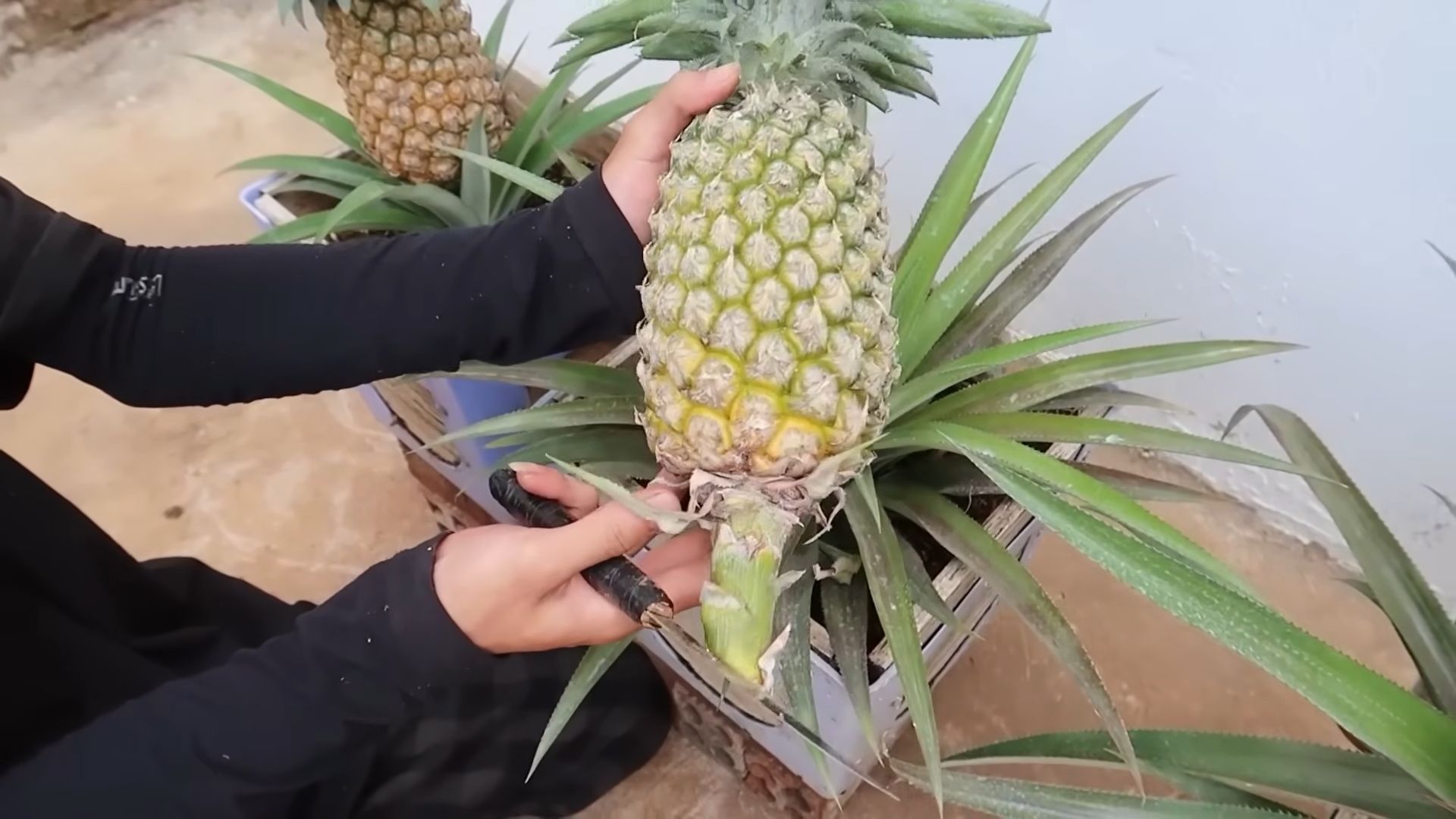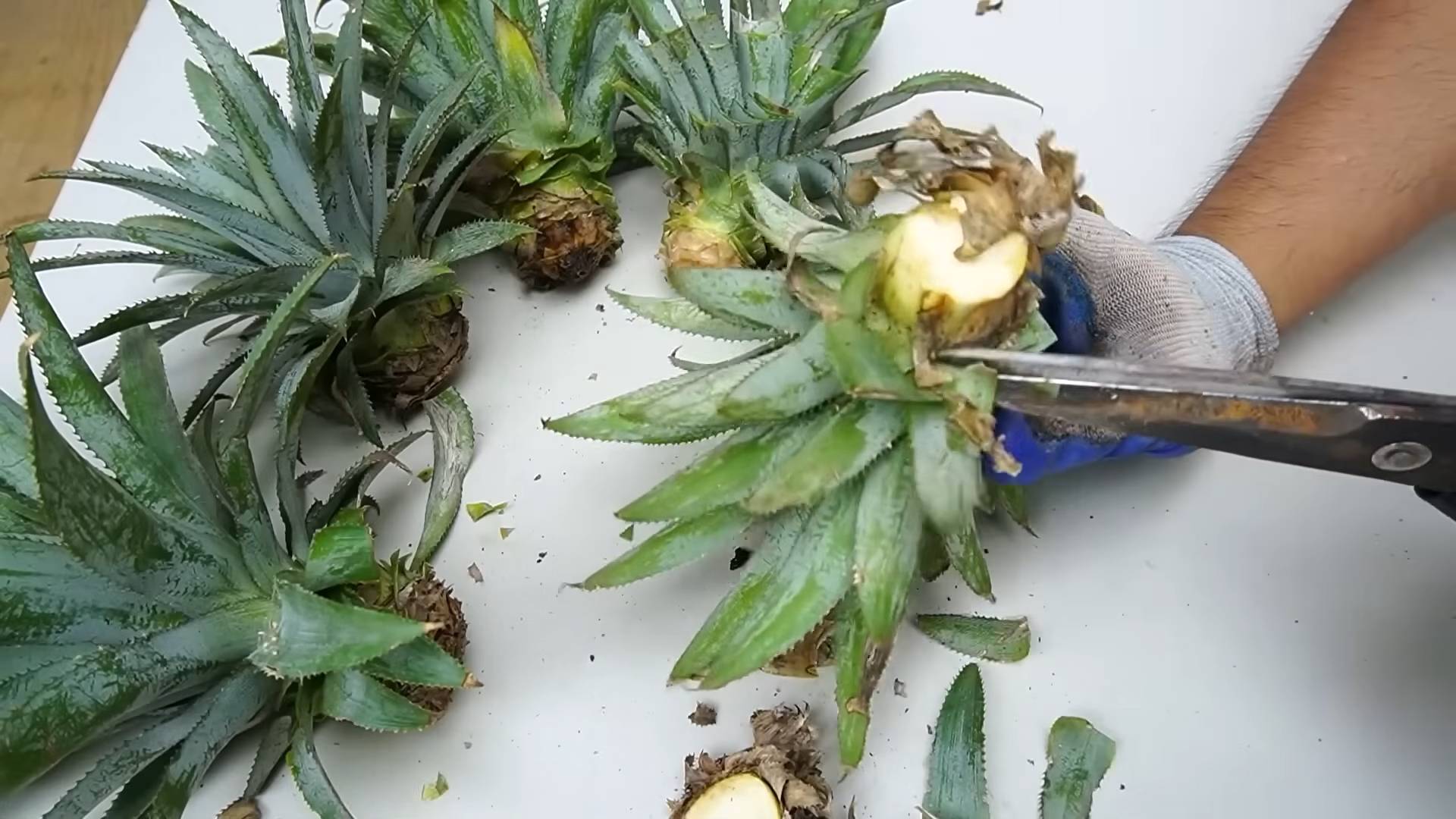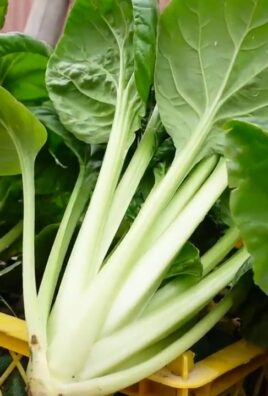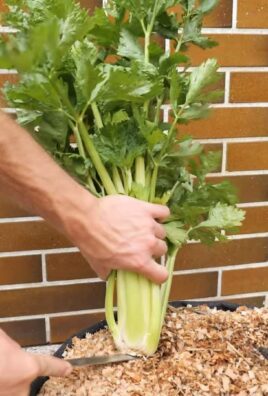Grow Pineapple Indoors? Absolutely! Imagine the look on your friends’ faces when you casually mention you harvested a juicy, homegrown pineapple right from your living room. It sounds like something out of a tropical dream, doesn’t it? But trust me, it’s more achievable than you think, and this DIY guide is going to show you exactly how.
Pineapples, originally native to South America, have a rich history, traveling the globe and becoming a symbol of hospitality and luxury. In colonial times, displaying a pineapple was a sign of wealth and welcome. While we might not be using them to impress visiting dignitaries these days, the joy of nurturing your own pineapple plant and eventually enjoying its sweet fruit is a reward in itself.
Why should you embark on this indoor pineapple adventure? Well, for starters, it’s incredibly satisfying! In a world of instant gratification, growing your own food, even something as exotic as a pineapple, connects you to nature and provides a sense of accomplishment. Plus, let’s be honest, store-bought pineapples can be expensive, and sometimes lack that peak-season flavor. With this simple DIY trick, you can have a continuous supply of fresh, delicious pineapple, all while adding a touch of tropical flair to your home. I’m excited to show you how to grow pineapple indoors and bring a little bit of paradise into your everyday life!

Growing Pineapples Indoors: A Tropical Treat in Your Home!
Okay, let’s be honest, who doesn’t love the idea of growing their own pineapple? It seems like something straight out of a tropical dream, but guess what? You can totally do it indoors! I’m going to walk you through everything you need to know to cultivate your own little slice of paradise right in your living room. It takes patience, but trust me, the reward is worth it.
What You’ll Need
Before we dive in, let’s gather our supplies. Here’s what you’ll need to get started:
* A Fresh Pineapple: Look for one that’s ripe, healthy, and has a vibrant green crown. The leaves should be firm and free of brown spots. Organic is always a good choice!
* A Sharp Knife: A good, sturdy knife is essential for removing the crown.
* Potting Soil: Use a well-draining potting mix. A mix specifically designed for cacti and succulents works great, or you can amend regular potting soil with perlite or sand.
* A Pot: Choose a pot that’s at least 6 inches in diameter. Make sure it has drainage holes!
* Water: Tap water is fine, but letting it sit out for 24 hours to dechlorinate is even better.
* Rooting Hormone (Optional): This can help speed up the rooting process, but it’s not strictly necessary.
* Spray Bottle: For misting the leaves.
* Patience: This is the most important ingredient! Growing a pineapple takes time.
Preparing the Pineapple Crown
This is the first crucial step. We need to get that crown ready to root!
1. Twist or Cut Off the Crown: The easiest way is to firmly grasp the base of the leaves and twist the crown off the pineapple. If it doesn’t twist easily, use your sharp knife to carefully cut the crown off, leaving about an inch of fruit attached.
2. Remove the Bottom Leaves: This is important! You need to expose the stem where the roots will emerge. Carefully peel off the bottom few layers of leaves until you have about an inch or two of bare stem. Don’t worry if you see little root nubs already forming – that’s a good sign!
3. Let it Callous Over: This is a key step to prevent rot. Place the crown on a paper towel in a cool, dry place for 2-3 days. This allows the cut end to dry out and form a callous.
Rooting the Pineapple Crown
Now comes the fun part – getting those roots to grow! You have two options here: rooting in water or planting directly in soil. I personally prefer rooting in water because you can see the roots develop, but both methods work.
Rooting in Water (My Preferred Method)
1. Prepare a Glass or Jar: Find a glass or jar that’s wide enough to hold the pineapple crown without it tipping over.
2. Add Water: Fill the glass with enough water to cover the bare stem, but not the leaves.
3. Place the Crown in the Water: Make sure only the stem is submerged. You can use toothpicks inserted into the sides of the crown to suspend it if needed.
4. Find a Sunny Spot: Place the glass in a warm, sunny location. A windowsill is ideal.
5. Change the Water Regularly: Change the water every 2-3 days to keep it fresh and prevent algae growth.
6. Wait for Roots: Be patient! It can take several weeks (sometimes even a month or two) for roots to appear. You’re looking for roots that are at least an inch long before planting.
Planting Directly in Soil
1. Prepare the Pot: Fill your pot with well-draining potting mix.
2. Make a Hole: Create a hole in the center of the soil that’s large enough to accommodate the pineapple crown.
3. Plant the Crown: Gently place the crown in the hole, making sure the bare stem is buried in the soil.
4. Firm the Soil: Gently firm the soil around the base of the crown.
5. Water Thoroughly: Water the soil until it’s evenly moist, but not soggy.
Planting and Caring for Your Pineapple Plant
Whether you rooted in water or planted directly in soil, now it’s time to give your pineapple plant a permanent home.
1. Choose the Right Pot: If you rooted in water, carefully transplant the rooted crown into a pot that’s at least 6 inches in diameter. Make sure the pot has drainage holes!
2. Use Well-Draining Soil: Again, a well-draining potting mix is crucial.
3. Planting Depth: Plant the crown so that the base of the leaves is just above the soil line.
4. Watering: Water thoroughly after planting. After that, water when the top inch of soil feels dry to the touch. Don’t overwater! Pineapples are susceptible to root rot.
5. Light: Pineapples need plenty of sunlight. Aim for at least 6 hours of direct sunlight per day. If you don’t have enough natural light, you can supplement with a grow light.
6. Temperature: Pineapples thrive in warm temperatures, ideally between 65°F and 85°F (18°C and 29°C).
7. Humidity: Pineapples appreciate humidity. You can increase humidity by misting the leaves regularly with a spray bottle, placing the pot on a tray filled with pebbles and water, or using a humidifier.
8. Fertilizing: Feed your pineapple plant every 2-3 months with a balanced liquid fertilizer diluted to half strength.
Encouraging Fruiting
This is where the real magic happens! Getting your pineapple plant to actually produce a pineapple can take a few years, but there are a few things you can do to encourage fruiting.
1. Maturity: Your pineapple plant needs to be mature enough to fruit. This typically takes 2-3 years.
2. Ethephon Treatment (Optional): This is a common method used by commercial pineapple growers to induce flowering. You can purchase ethephon solutions online or at garden centers. Follow the instructions carefully!
3. Apple Trick (My Favorite Method): This is a more natural and less risky method. Place a ripe apple core near the base of the plant and cover it with a plastic bag. The apple releases ethylene gas, which can trigger flowering. Leave the bag in place for a week, then remove it. Repeat this process every few months.
4. Patience, Patience, Patience: Seriously, growing a pineapple takes time and patience. Don’t get discouraged if it doesn’t fruit right away. Just keep providing the right conditions, and eventually, you’ll be rewarded with a delicious, homegrown pineapple!
Troubleshooting
Even with the best care, you might encounter a few problems along the way. Here are some common issues and how to address them:
* Yellowing Leaves: This could be a sign of overwatering, underwatering, or nutrient deficiency. Check the soil moisture and adjust your watering accordingly. Fertilize if necessary.
* Brown Spots on Leaves: This could be caused by sunburn or fungal disease. Move the plant to a location with less direct sunlight or treat with a fungicide.
* Root Rot: This is usually caused by overwatering. Make sure your pot has good drainage and allow the soil to dry out slightly between waterings.
* Lack of Fruiting: As mentioned earlier, it takes time for a pineapple plant to mature and fruit. Be patient and try the apple trick to encourage flowering.
Harvesting Your Pineapple
After all your hard work, the moment you’ve been waiting for has finally arrived! Your pineapple is ready to harvest when it turns a golden-yellow color and has a sweet, fragrant aroma. The fruit should also feel slightly soft to the touch.
1. Cut the Pineapple: Use a sharp knife to cut the pineapple from the plant, leaving a few inches of stem attached.
2. Enjoy! Let your pineapple ripen for a few more days at room temperature, if needed. Then, peel, core, and enjoy your homegrown tropical treat!
And there you have it! Growing pineapples indoors is a rewarding and fun project. It requires patience and attention, but the satisfaction of harvesting your own homegrown pineapple is well worth the effort. Good luck, and happy growing!

Conclusion
So, there you have it! Growing your own pineapple indoors isn’t just a fun project; it’s a rewarding experience that brings a touch of the tropics right into your home. Forget those expensive, often bland, store-bought pineapples. Imagine the satisfaction of slicing into a juicy, homegrown pineapple, bursting with flavor, knowing you nurtured it from crown to fruit. This DIY project is a must-try for anyone looking to add a unique and sustainable element to their indoor gardening.
Why is this a must-try? Because it’s more than just growing a fruit. It’s about connecting with nature, learning about plant life cycles, and enjoying the fruits (literally!) of your labor. It’s a conversation starter, a beautiful addition to your home decor, and a source of fresh, delicious fruit. Plus, it’s surprisingly easy! With a little patience and the right conditions, you can successfully cultivate your own pineapple plant.
Don’t be afraid to experiment! Try different varieties of pineapple. The smooth cayenne is a popular choice, but explore other options like the sugarloaf or red Spanish pineapple for unique flavors and textures. You can also experiment with different potting mixes. While a well-draining mix is essential, try adding some organic compost or worm castings to boost nutrient levels. Consider using a self-watering pot to simplify watering and maintain consistent moisture levels.
For a fun variation, try propagating multiple pineapple crowns at once. You can create a mini pineapple farm on your windowsill! Or, if you’re feeling adventurous, try grafting your pineapple crown onto a different bromeliad species for a truly unique and eye-catching plant.
The key to success with growing pineapple indoors is patience. It can take several months, even years, for your plant to produce fruit. But the wait is well worth it. The anticipation of that first homegrown pineapple is part of the fun. And when you finally get to taste it, you’ll realize it’s unlike anything you’ve ever had before.
We wholeheartedly encourage you to give this DIY trick a try. It’s a fantastic way to green up your space, learn something new, and enjoy the delicious reward of a homegrown pineapple. Once you’ve embarked on your pineapple-growing journey, we’d love to hear about your experience! Share your photos, tips, and challenges in the comments below. Let’s create a community of indoor pineapple growers and learn from each other. What are you waiting for? Start growing your own pineapple indoors today!
Frequently Asked Questions (FAQ)
How long does it take to grow a pineapple indoors?
The time it takes to grow a pineapple indoors can vary significantly, typically ranging from 2 to 3 years. Several factors influence this timeframe, including the variety of pineapple, the growing conditions (light, temperature, humidity), and the overall health of the plant. Patience is key! Don’t be discouraged if you don’t see fruit right away. Consistent care and attention will eventually lead to a delicious reward.
What kind of soil is best for growing pineapple indoors?
Pineapples thrive in well-draining soil that is slightly acidic. A good potting mix for pineapples should consist of a combination of peat moss, perlite, and vermiculite. This mixture provides adequate drainage, aeration, and moisture retention. You can also add some organic matter, such as compost or well-rotted manure, to enrich the soil and provide essential nutrients. Avoid using heavy clay soils, as they can retain too much water and lead to root rot.
How much sunlight does a pineapple plant need indoors?
Pineapple plants require plenty of sunlight to thrive. Ideally, they should receive at least 6-8 hours of direct sunlight per day. Place your pineapple plant near a south-facing window where it can receive the most sunlight. If you don’t have access to a sunny window, you can supplement with artificial grow lights. LED grow lights are a great option as they are energy-efficient and provide the full spectrum of light that plants need. Rotate your plant regularly to ensure that all sides receive adequate sunlight.
How often should I water my indoor pineapple plant?
Water your pineapple plant when the top inch of soil feels dry to the touch. Water thoroughly until excess water drains out of the bottom of the pot. Avoid overwatering, as this can lead to root rot. Pineapples are relatively drought-tolerant, so it’s better to err on the side of underwatering than overwatering. During the winter months, when the plant is not actively growing, you can reduce watering frequency. Also, pineapples benefit from having water poured into the central cup of the plant, mimicking how they collect water in their natural environment.
How do I encourage my pineapple plant to fruit?
Getting your pineapple plant to fruit indoors can be a bit tricky, but there are a few things you can do to encourage it. One common method is to expose the plant to ethylene gas. You can do this by placing a ripe apple or banana near the plant and covering them with a plastic bag for a few days. The ripening fruit will release ethylene gas, which can stimulate flowering. Another option is to use a commercial ethylene-releasing product. Make sure your plant is mature enough (at least 2-3 years old) and has received adequate sunlight and nutrients before attempting to induce flowering.
What are some common problems when growing pineapple indoors and how do I fix them?
Some common problems include root rot (caused by overwatering), mealybugs, and scale insects. Root rot can be prevented by using well-draining soil and avoiding overwatering. If you suspect root rot, repot the plant in fresh soil and remove any affected roots. Mealybugs and scale insects can be treated with insecticidal soap or neem oil. Regularly inspect your plant for pests and address any infestations promptly. Yellowing leaves can indicate a nutrient deficiency, so consider fertilizing your plant with a balanced fertilizer.
Can I grow a pineapple from a store-bought pineapple?
Yes, absolutely! That’s the beauty of this DIY project. You can easily grow a pineapple from the crown of a store-bought pineapple. Simply twist off the crown, remove the lower leaves to expose the stem, and let it dry for a few days to callous over. Then, plant the crown in well-draining soil and water regularly. With proper care, it will root and start to grow into a new pineapple plant.
What kind of fertilizer should I use for my indoor pineapple plant?
Use a balanced, water-soluble fertilizer with an N-P-K ratio of 10-10-10 or 14-14-14. Fertilize your pineapple plant every 2-3 months during the growing season (spring and summer). Dilute the fertilizer according to the package instructions to avoid burning the roots. You can also use a fertilizer specifically formulated for bromeliads, as they have similar nutrient requirements.
Is it necessary to repot my pineapple plant?
Yes, repotting is necessary as your pineapple plant grows. Repot it into a larger pot every 1-2 years, or when the roots become crowded. Choose a pot that is only slightly larger than the previous one to avoid overwatering. Use fresh, well-draining soil when repotting.
What temperature and humidity levels are ideal for growing pineapple indoors?
Pineapples thrive in warm temperatures and high humidity. The ideal temperature range is between 65-85°F (18-29°C). Maintain humidity levels around 50-60%. You can increase humidity by misting the plant regularly, placing it on a pebble tray filled with water, or using a humidifier. Avoid placing your pineapple plant near drafts or cold windows, as this can stress the plant.




Leave a Comment